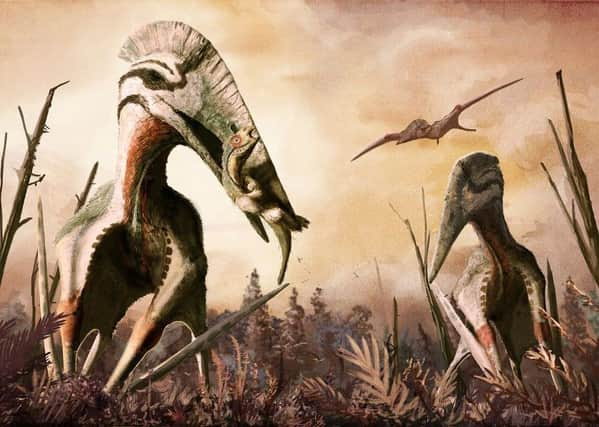Portsmouth archaeologist discovers dinosaur as big as a plane


New research suggests that a giant pterosaur – a toothless flying reptile with a 10 metre wingspan – may have been the main predator in ancient Romania.
Palaeontologists examined the creature’s unusual gigantic neck vertebra and believe it was a formidable carnivore and major predator that terrorised dinosaurs and other prehistoric animals of Cretaceous-age Transylvania.
Advertisement
Hide AdAdvertisement
Hide AdIt provides the first evidence of large predatory animals in the region at that time.
Dr Mark Witton, from the University of Portsmouth and Dr Darren Naish from University of Southampton, examined fossilised remains of the creature known as Hatzegopteryx, which belongs to the flying reptile group Azhdarchidae.
The species’ tubular neck bones usually give them extremely long necks, over 2.5 metres in length in the largest species.
However, the investigation suggests Hatzegopteryx did not have the elongated, gracile necks of its closest relatives but had a considerably shorter and stronger neck, and with larger muscle masses.
Advertisement
Hide AdAdvertisement
Hide AdOther remains of Hatzegopteryx include a jaw joint indicative of a half-metre wide skull and reinforced limb bones.
Dr Witton suggests that the proportions and structural reinforcement of all these elements are unlike those of any other azhdarchid species and would have made Hatzegopteryx a powerful and dominant predator.